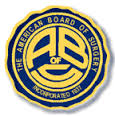If you look at the anatomy of the human hand, you will notice right away that there are two main supply arteries that run into the hand to supply blood to the bones and tissues they contain. These are the ulnar and radial arteries, and the blood they transport is then delivered to the arteries and returned to the heart via the veins. Right away, this tells us that with two delivery routes, it is not likely that a lot of problems will occur with blood flow into the hands, unless there is injury or disease.
This is why hand experts know that, “Vascular disorders of the upper-extremity are uncommon, but…Variations in anatomy are common…which may affect the way blood flow ultimately reaches each finger.” (Handcare.org, 2015).
In other words, there are more causes for vascular problems that relate to systemic diseases than to technical problems with the hands themselves. This is not to say that certain issues dont occur. Consider that you may have trauma, compression, vasospastic, occlusive, or malformation issues that can impact how blood flows through a hand.
But, the more common reason you may experience vascular disorders in your hands would be that a certain disease has led to the problem (think hypertension, diabetes, kidney issues, and so on), or that your occupation forces you to expose your hands to patterns that impair healthy circulation. Additionally, it is known that smokers often experience problems with vascular disorders in the hands, as well.
Signs and Symptoms
It is usually fairly easy to detect a vascular problem in your hands. You will notice many obvious signs, such as discoloration of the fingertips, discomfort or pain, numbness or tingling, an intolerance to cold, swelling, and ulcerations that fail to heal. If any of these symptoms occur, it is time to visit your hand doctor for an examination.
They will be able to determine what the source of the problem is by doing a full medical history, exploring any swelling or discoloration, and performing a range of diagnostic procedures that will determine the quality of the blood flow (pulse) at all of the relevant points on the body.
Diagnosing and Treating
With a full range of tests, a hand doctor can then determine the cause and the appropriate treatment. For example, there are some fairly common, as well as several unusual issues that can lead to vascular disorders in the hands. Raynauds, as an example, is an unusual vascular condition (NYP.org, 2015) that forces the arteries in the fingers to spasm, interrupting blood flow and leading to discoloration of the fingertips. There are other fairly common causes, such as trauma (crushing, cutting, etc.), a blockage known as an aneurysm that may impeded blood flow, and even malformations of the vascular vessels that impeded flow.
It is important to give any vascular disorders of the hand adequate attention and treatment. A hand doctor is the most appropriate medical professional to consult as soon as possible in order to get the best outcome over the long term.
Source
NYP.org. Unusual Vascular Conditions. 2015. http://nyp.org/services/unusual-vascular-conditions.html












